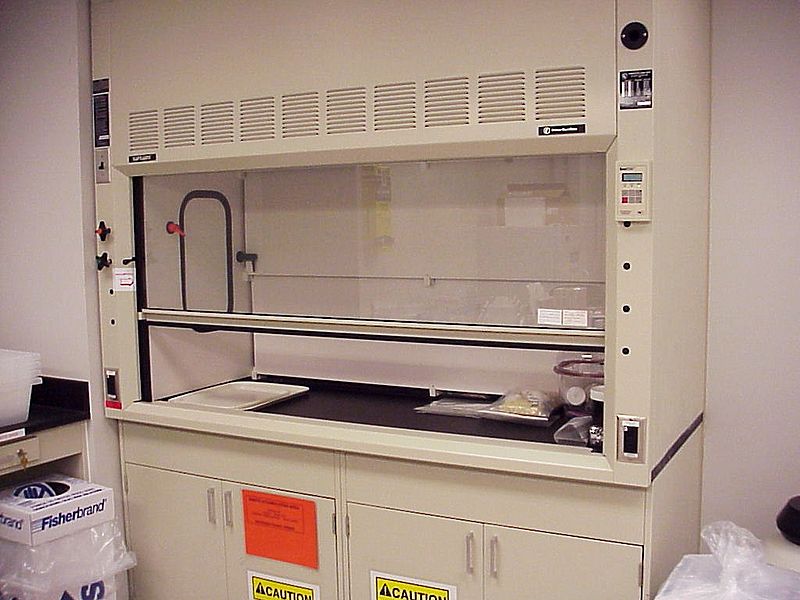Fume hoods are an enclosed capsule device that draws air in an inward motion for ventilation and proposes to control and exude toxic chemical fumes and particles. This equipment is also called Laboratory fume hoods. These hoods also process vapors, and matters resulting from procedures within a lab or research center.
Fume Hood purposes
- Fume hoods are some of the most reliant safety equipment available in a laboratory or a chemical processing plant. However, that is only the case if they are installed correctly. Fume hoods are a protective strategy to maintain the safety of the employees working close to dangerous chemical plants.
- The fume hoods contain dangerous gasses, fumes, and vapors that are generated inside the hood. It is installed to connect to the airflow exhaust so dangerous fumes exit out of the laboratory ventilation.
- The fume acts as a supplementary ventilation system for processing chemicals and toxic gasses.
- The fume hoods also contain a clear window so the employees can use the equipment properly. The sliding shield is called the Sash. It contains aerosols and protects the skin and employees from chemical splashes, droplets, or explosions from inside the hood.
Misconceptions and Misuses of Fume Hoods
Now that we have discussed why fume hoods are an essential requirement in a chemical setting, it’s time to learn the usual misuses and limitations of these fume hoods.
- Firstly, as discussed above, the sash will prove unsuccessful when the pressure of the hood inside is high. It is not capable of processing the increased velocity of contaminants.
- The hood will not contain explosions. It will not contain explosions even when the window is completely closed. The purpose of fume hoods is to protect employees.
- When an explosion warning exists, the employees are expected to work with barriers and proper enclosures with compatible strength to absorb or deflect the explosion’s impact. However, installing these barriers will obstruct the airflow inside the working space.
- Perchloric acid is a dangerous chemical that sits on surfaces and explodes on contact. This has been causing severe injuries to employees and researchers. Therefore, conventional fume hoods must not be used where perchloric acid is present. Special perchloric fume hoods are present to process this harmful contaminant. These are made from stainless steel.
- Another ineffective control for fume hoods is connecting the exhaust to the hood from any equipment located at the same distance. Airflow must be minimized, so the toxic fumes exit the space quickly and efficiently.
- Labs and research centers work with microorganisms. However, these should be worked on biosafety cabinets. These cabinets provide a seal-proof environment, so there is very little chance of them escaping through airways.
- A fume hood should not be treated as a waste disposal service. This violates environmental regulations and compromises the safety of the employees.
Lab owners and research center investors must take proper care of their staff and employees by providing them the right equipment for their safety. Employee regulations are not a joke, and their lives must be protected at all costs.
